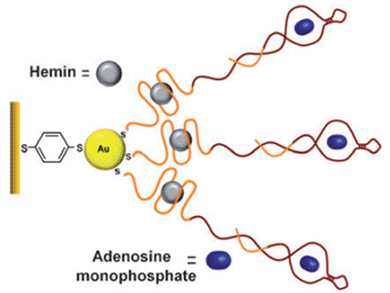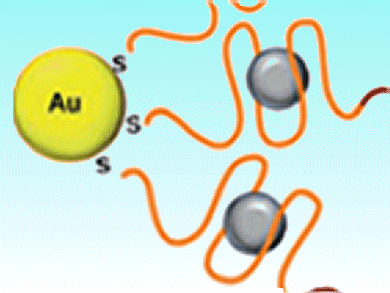Surface Plasmon Resonance (SPR) spectroscopy is a widely used method to follow biorecognition events on surfaces; however, it is limited by the degree of refractive index changes (dielectric properties) that occur on the metal surfaces and affect the SPR shifts, thus amplification methods are required.
Itamar Willner and colleagues, Hebrew University of Jerusalem, Israel, have proposed an amplification involving thiolated nucleic acid hairpin nanostructures that contain “caged” G-quadruplex sequences and single-stranded recognition domains immobilized on Au surfaces or Au nanoparticles (NPs) linked to Au surfaces (see scheme). Upon detection, the hairpin opens, and the resulting hemin/G-quadruplexes act as reporters for the sensing events.

Immobilization of the hairpins on AuNPs resulted in cooperative amplification effects on the sensing of the different analytes such as DNA, adenosine monophosphate, and Hg2+ ions with greater sensitivity than other optical or electrical sensors.
Images: © Wiley-VCH
- Amplified Surface Plasmon Resonance-Based DNA Biosensors, Aptasensors, and Hg2+ Sensors Using Hemin/G-Quadruplexes and Au Nanoparticles
G. Pelossof, R. Tel-Vered, X.-Q. Liu, and I. Willner
Chem. Eur. J. 2011.
DOI: 10.1002/chem.201100601



